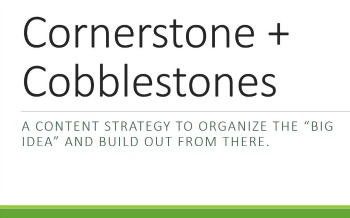Remember the Deck of Cards that the U.S. military unveiled after the 2003 invasion of Iraq? In addition to Saddam Hussein, it featured a who’s who of the regime’s inner circle. If you’d diagrammed it, you would have ended up with a traditional hierarchical chart with Hussein at the top and the lines going down from there.
But that’s not how the military found Saddam Hussein. Instead, Col. Jim Hickey and his colleagues developed a social diagram to understand the Iraqi leader’s network of family, close friends, and tribal ties. (Stick with me here, I promise this post isn’t about politics or military strategy.)
At a recent New America Foundation panel discussion on Social Networks and Modern Warfare, Hickey stressed that filling in the pieces and capturing Saddam Hussein was the result of tremendous teamwork–not just by his troops, but in conjunction with special forces and others operating in Iraq.
Hickey also stressed that:
- everyone worked together to exchange information
- there were no silos
- they worked together to pursue opportunities
- no one asked for permission or ran decisions up the chain of command (i.e., they just went with it)
I’m going to suggest that the way the military pursued its objective offers three lessons learned for businesses:
1. We need to rethink influence. Hickey and his colleagues understood that family structures, not government officials, were the key to finding their man. We still over-rely on traditional org. charts rather than looking at how information truly flows within organizations. This has huge implications not only for how companies operate, but also for how we identify good business intelligence.
2. We need to do, then ask. Best Buy‘s Results-Only Work Environment is a good example. The people who developed the strategy didn’t ask permission to implement it; they tested it and proved it worked–and then sought permission to roll it out more widely.
3. Silos have to go. I’ve written about silos before. Hickey did something atypical of many hierarchical organizations: he shared information, and shares the credit today. Companies also need to let go of their fiefdoms.
What would you add?
Photo by striatic (Flickr).



